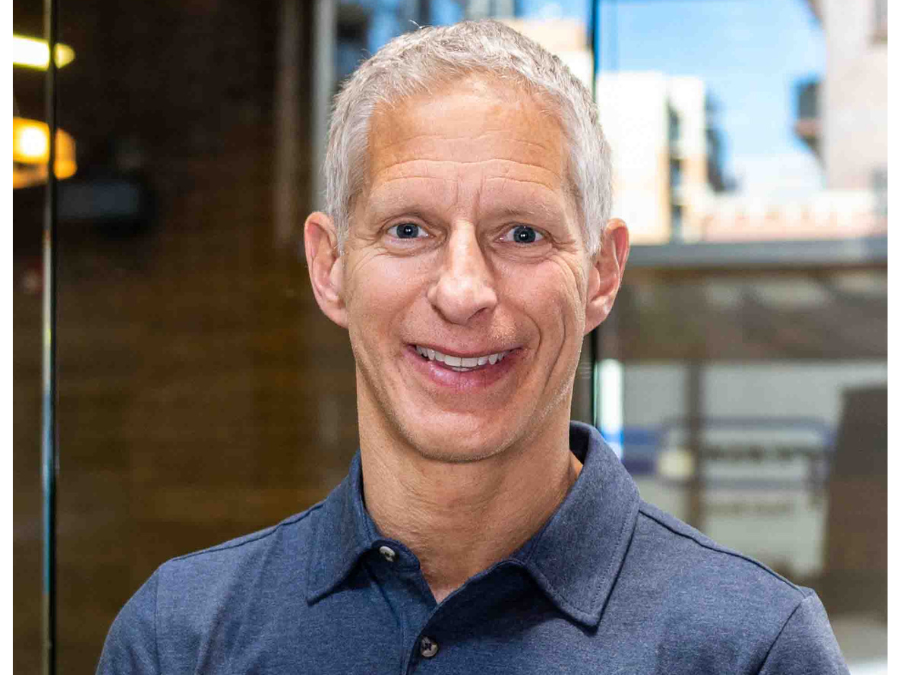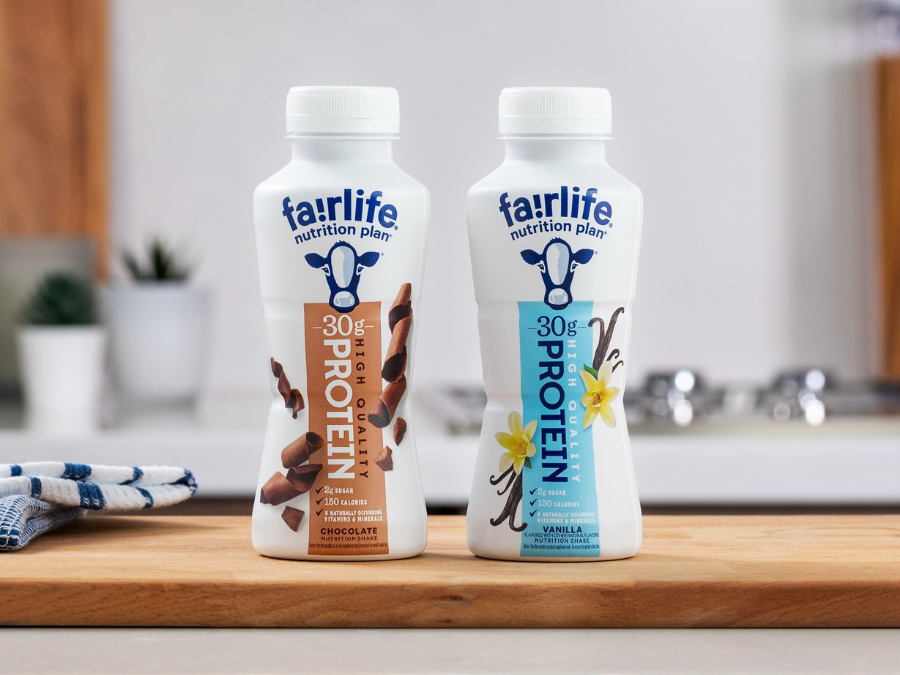
US-based milk brand Fairlife was founded by Mike and Sue McCloskey in 2012 as a partnership with The Coca-Cola Co. and dairy cooperative Select Milk Producers, which was set up in 1994 by the McCloskeys.
Fairlife produces ultra-filtered fresh milk (UFM) drinks, including its Core Power protein shakes and Yup flavoured milks.
At the start of 2020, The Coca-Cola Co. bought out the remaining shares in the venture, increasing its minority stake of 42.5% to 100%.
Last month, The Coca-Cola Co. said it would be investing $650m in a new production facility for the Fairlife milk brand. The 100-acre facility in Webster in upstate New York will be located between Rochester and Niagara, two major US dairy-producing regions. The business already owns two production facilities in the US: one in Coopersville in Michigan and another in Goodyear in Arizona.
In 2018, the brand expanded to Canada and it began sourcing raw ingredients from Ontario in 2020.
Just Food spoke to Fairlife’s CEO Tim Doelman about the company’s growth, international ambitions and that production site due to ramp up in 2025.
Just Food: You recently got a major investment package from Coca-Cola for the construction of a production site. What does that mean for Fairlife?
Fairlife CEO Tim Doelman: We are shorter on the capacity side right now. The demand has outstripped a weakened supply to it. This facility has a lot of scale. It will not quite double our size but it will give us a good 60-70% more capacity to be able to both hit the current demand and then have some runway going forward that will allow us to innovate like we’ve innovated in the past.
JF: Has demand been unexpected or volatile?
TD: No, it’s been steady. We launched our first products really in around the 2014 timeframe. We had an earlier one that started in 2012, which is the Core Power product today and our UFM milk in 2014. It’s really been steady growth ever since. I’d say our CAGR hits around 30-35% over the last ten to nine years of the business. So it’s just continued to grow the last couple of years, maybe even accelerated a touch, but overall we’ve just had a really good growth since the brand was introduced in that 2014 timeframe.
JF: What does your market look like?
TD: We have three different spaces that we’re playing in. First off, the UFM milk side of the business, it’s really a fantastic introduction into a market where people kind of stopped drinking milk. They didn’t think about it, you know? They were looking at some alternative things at the time. Soy was big and almond milk was kind of just coming out when we introduced this product to the market. Over 50% of the buyers were coming from outside of buying dairy. It wasn’t a substitution or anything like that.
People that had maybe consumed milk when they were younger and dropped off or [it] wasn’t hitting their needs for whatever reason. When we brought it to them and presented it in a way where you had this higher protein, lower sugar, great taste, nice packaging, all of those things really got people into the category and since it’s just been steady growth. It’s a wide swathe of people, really, outside of the traditional dairy consumption side of it.
On the Core Power and the Nutrition Plan, Core Power’s a little more geared towards sports nutrition and recovery, so it tends to fall into the active lifestyle folks that are out there. The Nutrition Plan line is maybe a little broader still where you can have 14-year-old kids getting it from their mom after soccer practice to someone in their 20s just trying to be lean and fit and run a good diet, to someone in their 40s doing the same thing who want more protein in their diet, you know, to my 95-year-old father-in-law who loves the product for its good source of protein in his diet.

JF: What percentage of the business does the Core Power sports nutrition and recovery range represent?
TD: I think across the company, it would probably represent around 30% of our revenues if you wanted to look at it that way. You know, it’s sizable, but the nice thing is you have 70% that’s even more diverse which is a broader category. So, I think that’s why we want to have this facility where it gives us more capacity to continue to innovate in other areas, and that’s something that we’re looking forward to.
Dairy as a whole has actually grown very well from the 70s to today but it’s shifted from fluid milk to cheese mostly, and other products, yogurt’s done well, ice creams held its own and butter’s kind of come back.
So, the totality of the dairy industry is healthy but the fluid milk business is not and there has not been enough innovation in it. It was too commoditised, standardised and not invested in and that’s what we did. We looked at this opportunity to really invest and try to add value to an area that resonated with consumers. Higher protein, lower sugar and lactose-free is a recipe that’s worked very well for us.
JF: Your main markets are the US and Canada. Any immediate plans for international expansion?
TD: In totality, we have not prioritised international because we’ve had plenty of growth here and we’re a relatively young company still honestly, even within the Coke system.
I think when we go internationally, we have a lot more considerations to take. We have to understand the consumer and we have to understand the particular regulatory situation.
We have 350 million people with a lot of money here [in the US]. You go to Europe, even though you got 700 million people, you’ve got 30 countries that you’re dealing across, with different regulatory hurdles. All of that would have to be considered. Ultimately we hope to be able to go there and bring these great products there too, but it’ll take a fair amount of planning to come up with the appropriate solution.
JF: What impact did the pandemic have on the business?
TD: I think it was a benefit to us in totality. More people ate at home, which means more grocery shopping and a large percentage of our sales still comes from grocery stores.
It probably cemented our role in people’s lives. We saw a lot of uptick in household penetration during Covid. Obviously, you know, the C store and avenue convenience stores were impacted negatively initially but they bounced back pretty quick. So, yeah, I think we were able to ride through it. Like everyone, we dealt with labour issues and supplier issues and stuff of that nature. But, by and large, everything we manufacture is made here in the United States so it was easier for us to ultimately execute them probably than other industries.
JF: What would you say are the principal challenges you face moving forward?
TD: It’s really going to be balancing the demand. We have got very strong demand against somewhat limited capacity. We’re going to always try to work to get that capacity ahead of demand to make sure that you can service all your customers with everything they want but it’s a balance still until this project comes online. That’s why we’re so excited about this facility coming online in New York. It’s great to have products selling faster than you can make but it’s also a problem to have products selling faster than you can make. So it’s kind of getting that balance right for each one of our customers.
The business over the last ten years has had really strong growth. The opportunities to innovate in the dairy space is really … we’re just scratching the surface with the products that we’re manufacturing today. And we’re really excited to be able to expand upon the growth that we’ve had with this facility.
It used to be people thought this was a dead industry, you know, with milk declining. How could there be an opportunity there? But milk inherently has great value in it. It just needs to be harvested appropriately, packaged and then brought to the consumer.
